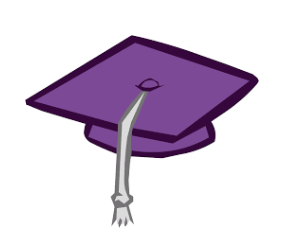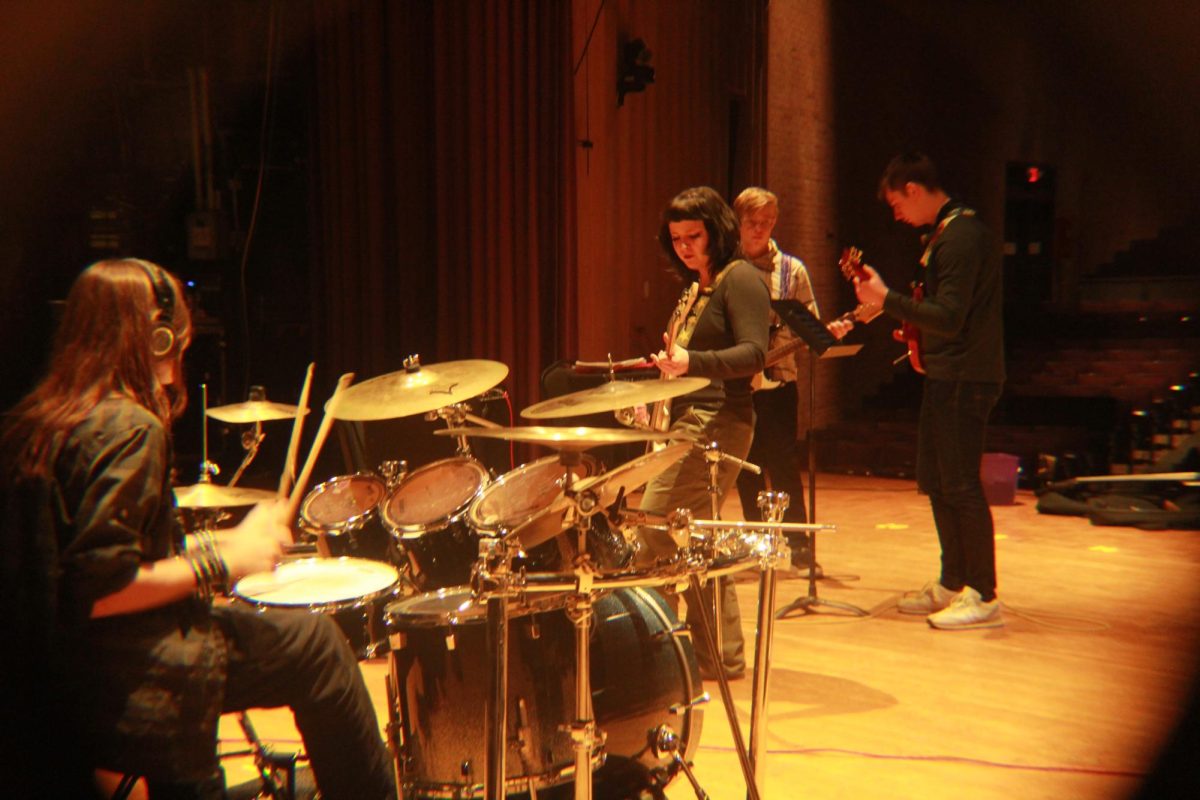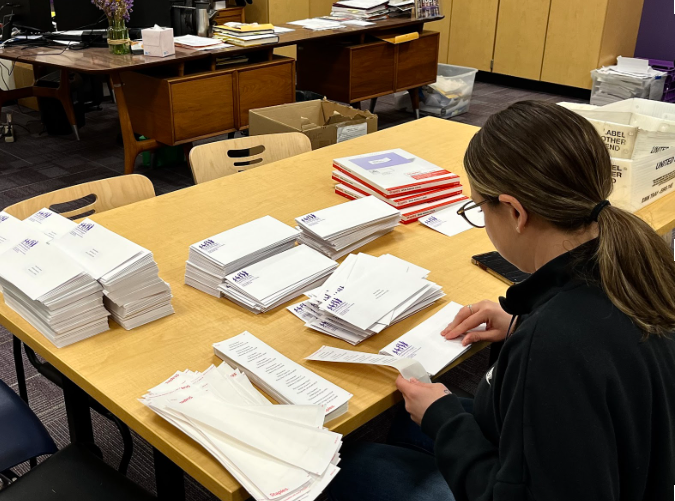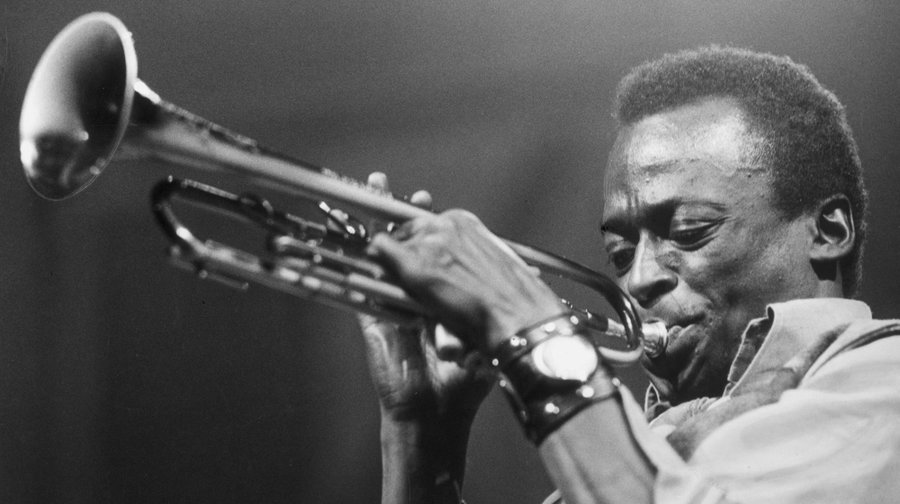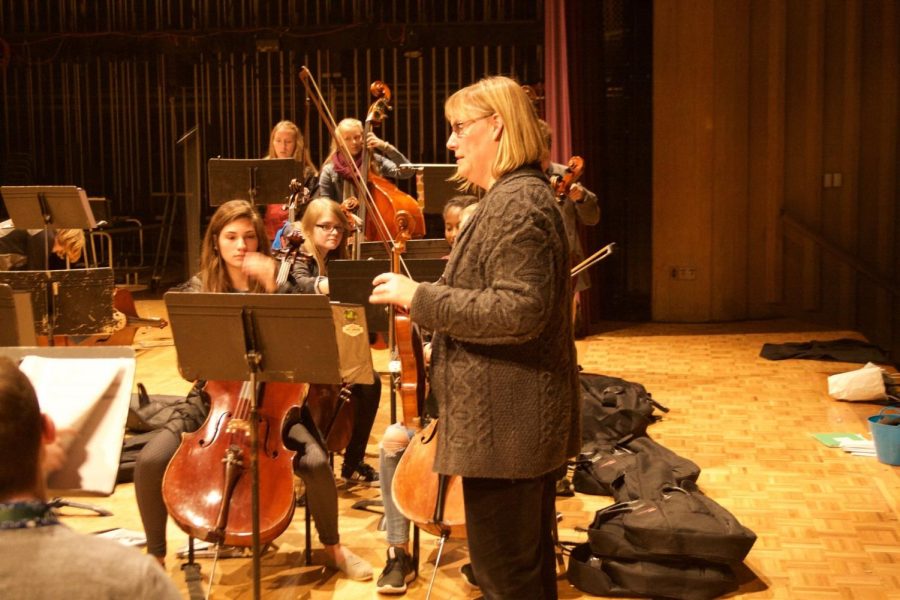When most of us think of jazz, we think of boring, old music; or that music that plays in the elevator or on the 107.3 (the wave) station on the radio. While these musics fall under the umbrella genre of jazz, the lack the core element that makes jazz the revolutionize music it was in the early 20th century—improvisation. Famous jazz trumpeter Miles Davis, pictured on the right, put it best in saying, “I’ll play it first and tell you what it is later.”
Let begin by understand a jazz chart. A melody is listed, maybe from a pop song at the time, or an original composition, with chords to accompany. After the melody (or head) is played, the musicians go around, soloing over the chords that were played along with the head, while the rhythm section provides a foundation. As the drummer provides the swing beat, the bassist walks a bassline (using the same chords), and the pianist comps the chords in creative voicing and rhythms, a soloist can lay onto of it all and express themselves in possibly the most creative output a musician can have.
But how is this linkable to the creative mind? And how can we use jazz improvisation to understand human creativity at its core?
“I had always intuitively understood that the creative process in jazz improvisation is very different from the process of memorization,” jazz musician and neuroscientist Dr. Charles Limb. “That is immediately apparent when you play.” Limb continues, explaining how playing jazz music is unlike any other creative output: It’s instantaneous. Unlike a writer or painter, playing jazz music is a constant creative process, starting from the moment a soloist starts.
In his study, Lark shows that when a musician solos, the medial prefrontal cortex, parts of the brain that allow humans to express ourselves, glow up in the MRI scan taken, while the dorsolateral prefrontal cortex, the part responsible for self-inhibition and control, remains dormant. Limb put it best, saying, “I view this as a neurological description of letting go… If you’re too self-conscious, it’s very hard to be free creatively.”







